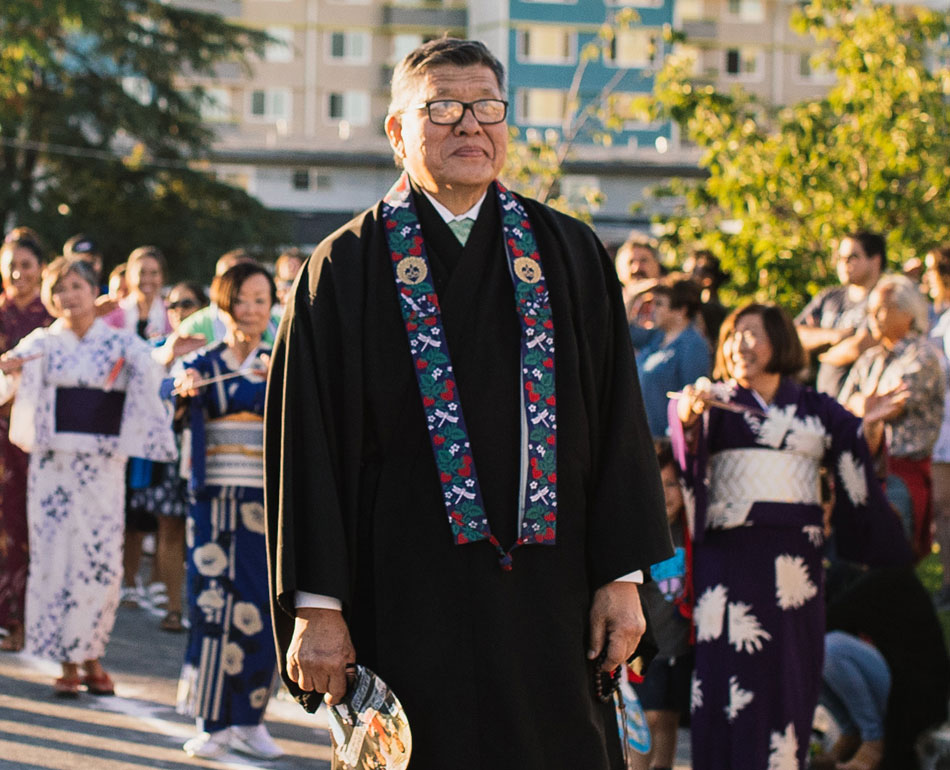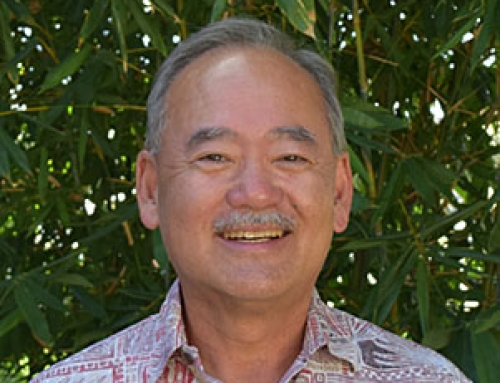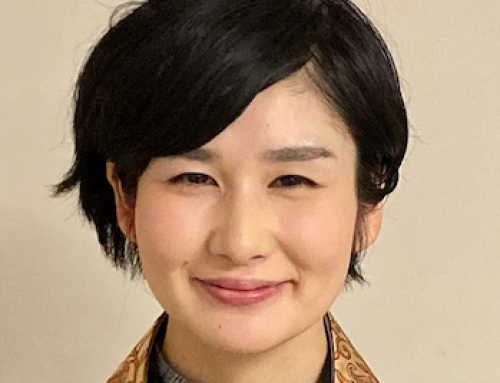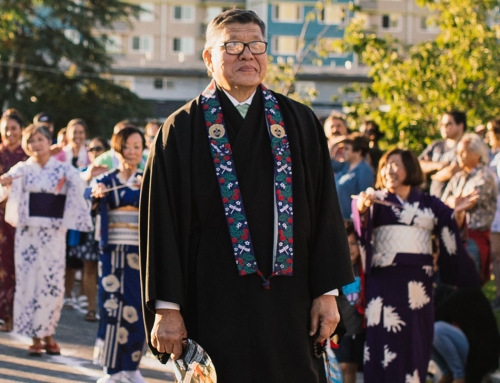When a person dies a funeral service is usually conducted. It is at this funeral service that a Homyo (Buddhist name) is presented. The Homyo acknowledges the person’s relationship with the Dharma. The funeral is the only time when a Homyo is presented that is accompanied by a permanent Betsuin Death Record. This record is placed into the Betsuin Kakocho, which is a record of every funeral that has been conducted by a Betsuin minister or by a minister that has been asked to conduct a funeral on behalf of the Betsuin. When a funeral is conducted, a triplicate of the funeral information is made. This is separate from the kakocho. Of these three copies one is kept in the Betsuin files, two are sent to the Buddhist Churches of America which then keeps one copy and forwards the third copy to Otani Homyo in Kyoto, Japan.
It does not matter how large the gathering or how complex the order of service may be or whether remains of the deceased are present if a Homyo is presented then the service is a funeral.
In 2020 as the pandemic set in, many of our standard practices were upended. We could no longer meet in person. We were not certain about when things would change. In the beginning it was thought that perhaps a few months of inconvenience would have to be endured. Services were postponed. Perhaps things would return to normal, at most, in a few months then we could return to the schedule we delayed. As the months continued to mount, with no end in sight, we began to consider how we would schedule our traditional services.
In person services were not possible. We began to experiment with Zoom and virtual services. One of the first services I conducted was a virtual makuragyo (end of life or pillow) service from our home garage. It took awhile to figure out the orientation, how I would be viewed over Zoom conducting the service and where the Obutsudan and incense burner would be placed.
As the months dragged on and the extreme seriousness of covid was beginning to be understood, we adapted. We would wait. If waiting was not possible then the number of people attending a service would be limited. A funeral service that would once bring together hundreds of people was now limited to immediate family members and close friends. Sometimes a funeral was delayed indefinitely. In some cases for nearly a year.
Under these circumstances new patterns began to be established. Out of necessity services became much smaller. It was alright to delay a service. Refreshments after a funeral could be small affairs. As a result the focus shifted from the logistics of planning for a large service to coordinating the attendance of family members and close friends. With the Betsuin’s competence with Zoom stabilizing we could offer remote participation to many others locally and in some cases in places around the world.
Buddhism reminds us that everything is changing. The patterns we felt were essential and always a part of our tradition has and will continue to change. As these patterns change we must not lose sight of what these patterns convey. The rituals, practices, patterns carry the teachings of the Buddha which at its core is the means to address and resolve the difficulties we cause and experience. The death of someone we care deeply about can be a cause that moves us to think about our relationship with the world around us and how our life is possible because of the many lives, the infinite life that we are immersed in.
The Homyo represents a relationship with one life. It is personal and it can be deeply meaningful. It is also a point of convergence that, if we allow ourselves to appreciate, connects us to many other lives that have been shared in the experience of death. Other lives that have similarly grieved and perhaps discovered something meaningful and happy in a profound expression of change. And, the Homyo can be a reminder of the teachings of the Buddha. It is the end point of nearly three thousand years of Buddhism. Wherever we might be in our understanding of Buddhism the Homyo expresses the importance that we hold for the Buddhadharma.




